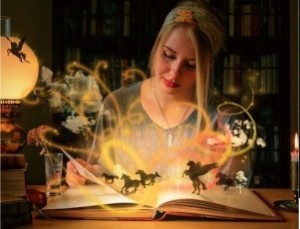
Arquivo para April 19th, 2017
(Português) Imaginário e mitologia
Imaginary and Mythology Outside of Christianity and, to some extent, Islam, mythologies are reborn and a new and powerful literature that awakens, especially in the young, something fantastic, so it is called fantastic literature. Fantastic literature is a genre in which fictional narratives are centered on elements not existing or not “recognized” in reality at the time the work was written.
mythologies are reborn and a new and powerful literature that awakens, especially in the young, something fantastic, so it is called fantastic literature. Fantastic literature is a genre in which fictional narratives are centered on elements not existing or not “recognized” in reality at the time the work was written.
This is because one cannot think of Macunaíma, without thinking of the Brazilian regional symbols in Naruto, without thinking about Japanese society, nor think of Lord of the Rings without thinking of elves, elves and other figures of Celtic and Norse literature, although it was Written by JRR Tolkien, which although it is seen as English was born in South Africa.
Thinking of Macunaíma (writted by , where we can draw aspects of the recent contemporary culture of Brazil, I think of the definitions or uncertainties given by Todorov: “The fantastic occupies the time of this uncertainty. Once one of the two answers is chosen, the terrain of the fantastic is left to enter into a neighboring genre: the strange or the wonderful. The fantastic is the hesitation experienced by a being who knows no more than natural laws, in the face of an apparently supernatural event. (Todorov 1980: pp. 15-16).
Either we go to the categories of illusion or the being actually exists, as Todorov asks. Todorov affirming that he will only give a definition at the end and does so after analyzing some of his major works such as The Passionate Devil of Cazotte, Jan Potocki’s Manuscript of Saragossa and the singular example of Aurelia de Nerval, but at the same time he anticipates a first definition: “The concept of fantastic is therefore defined in relation to the real and imaginary, and the latter deserve something more than a mere mention” (Todorov 1980: pp. 16).
What is not to be confused is this literature with the Christian fables of the “Chronicles of Narnia”, which was written by the Irish author CS Lewis, written in the 1950s, and in the case of national literature we could cite The Lady Compassion of Ariano Suassuna, chose first edition is from 1956.
The limits between mythology and the imaginary are clear, it is possible in the second case to establish a sociological analysis in which are found real social elements to which the imaginary characters.
TODOROV, Tzvetan. Introdução à literatura fantástica, Espanha: PREMIA (version digital translate to portuguese) 1980.

